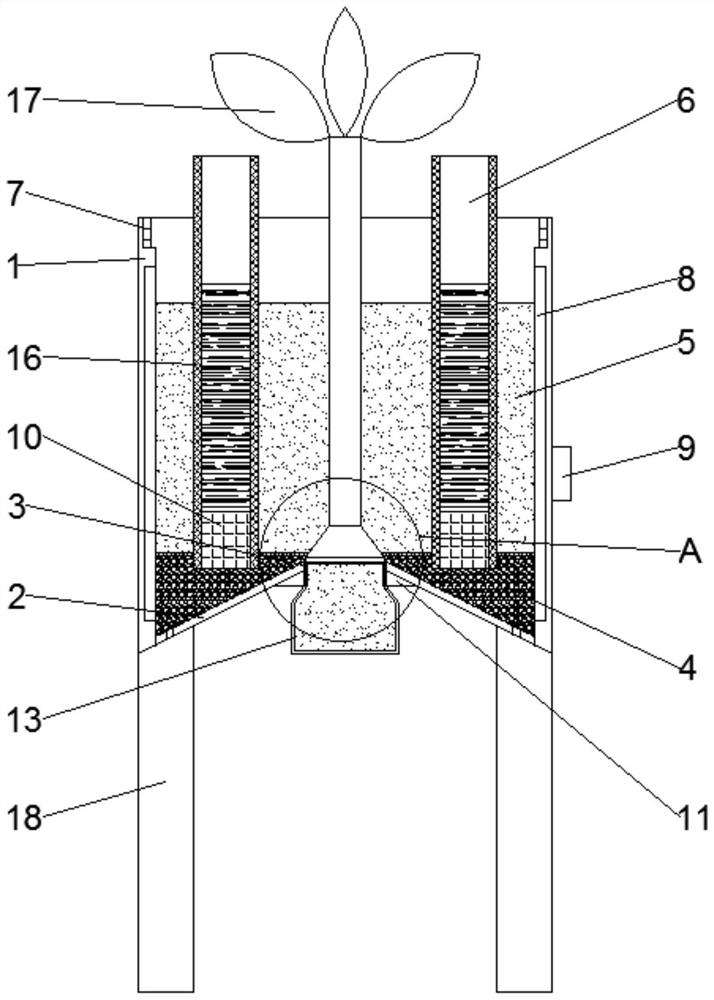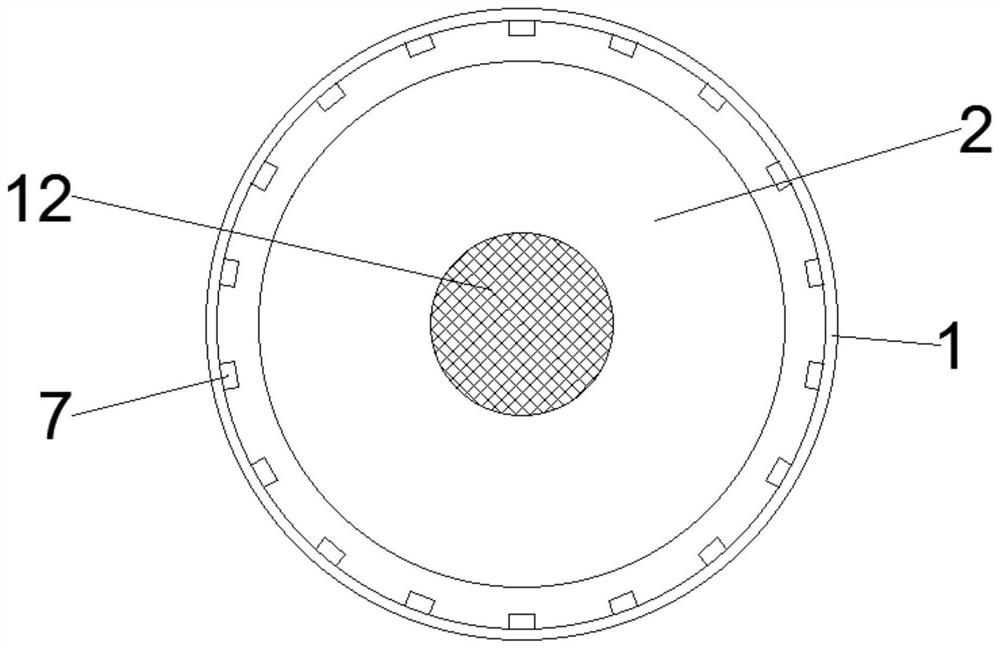Chili rhizosphere secretion collecting device and collecting method
A collection device and exudate technology are applied in the field of collection and sampling of pepper root exudates and rhizosphere soil, and can solve the problems of gradient change of root system properties, difficulty in distinguishing rhizosphere and non-rhizosphere, and technical difficulties.
- Summary
- Abstract
- Description
- Claims
- Application Information
AI Technical Summary
Problems solved by technology
Method used
Image
Examples
Embodiment 1
[0039] refer to Figure 1-5 , the present embodiment provides a device for collecting capsicum rhizosphere exudates, comprising a culture bucket, wherein a culture medium and an irrigation assembly are arranged in the culture bucket;
[0040] The cultivation barrel includes a barrel body 1, the bottom end of the barrel body 1 is fixedly connected with a bottom plate 2, the bottom plate 2 is tapered and the smaller end is located in the barrel body 1, the smaller end of the bottom plate 2 is provided with a through hole 3, and the through hole 3 A filter element 12 is provided;
[0041] The culture substrate includes a first culture layer 4, the first culture layer 4 is laid in the barrel body 1 and the top of the first culture layer 4 is higher than the through hole 3, and the top of the first culture layer 4 is laid with a second culture layer 5;
[0042] The watering assembly includes irrigators 6 arranged at equal intervals in the circumferential direction in the second cu...
Embodiment 2
[0062] The difference with Embodiment 1 is that in this embodiment, the irrigator 6 is replaced by a PVC plastic pipe, the bottom end of the PVC plastic pipe is closed, and the side wall of the PVC plastic pipe is provided with some miniature water seepage holes, and the nutrient solution is added to the After entering the PVC plastic pipe, it first penetrates into the protective layer 16, and then penetrates into the second culture layer 5 through the protective layer 16.
Embodiment 3
[0064] The difference with embodiments 1 and 2 is that in the present embodiment, the filter element 12 adopts 18 meshes of nylon mesh, the sandstone particle size of the first culture layer 4 is greater than 1mm and less than 2mm, and the fibrous roots of pepper plants 17 pass through the filter element 12 Form a horizontal root surface. At this time, when collecting capsicum rhizosphere exudates, the sterile filter paper is in direct contact with the capsicum root, which makes the collection more convenient.
PUM
| Property | Measurement | Unit |
|---|---|---|
| particle diameter | aaaaa | aaaaa |
| particle diameter | aaaaa | aaaaa |
Abstract
Description
Claims
Application Information
 Login to View More
Login to View More - R&D
- Intellectual Property
- Life Sciences
- Materials
- Tech Scout
- Unparalleled Data Quality
- Higher Quality Content
- 60% Fewer Hallucinations
Browse by: Latest US Patents, China's latest patents, Technical Efficacy Thesaurus, Application Domain, Technology Topic, Popular Technical Reports.
© 2025 PatSnap. All rights reserved.Legal|Privacy policy|Modern Slavery Act Transparency Statement|Sitemap|About US| Contact US: help@patsnap.com



